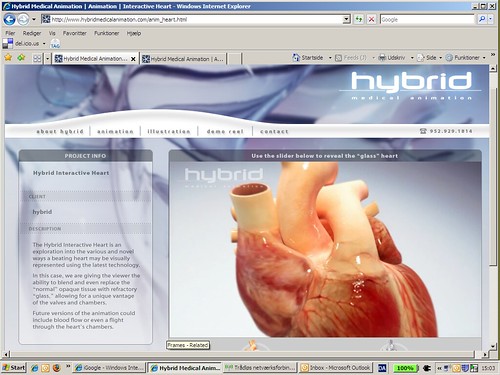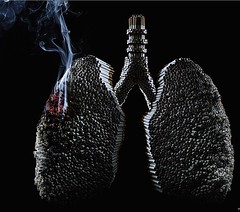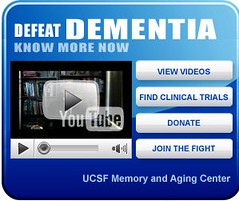Why has art and aesthetics then entered the science, technology and medicine (STM) museum sector? This was not the case 15 or 20 years ago. What has happened in the last two decades?
I will not attempt to give any historical, sociological or political explanations for the flow of art and aesthetics into STM-museums; that’s a topic for a serious research project and even a book. Instead I will take on a more preliminary task: I will try to reconstruct a handfull of ideal-typical rationalities for why STM-museum curators around the world are engaged in bringing art and the biomedical sciences together.
I hasten to add that I haven’t done any fieldwork, or asked curators to fill in any questionaires. The reconstructions that follow in the next couple of posts are based primarily on websites and occasional discussions, and especially on my own experiences as the director of Medical Museion in Copenhagen.
Sizewise, Medical Museion is somewhere between the Jurassic midgets and the contemporary Power giants. We are placed in an old 18th century palace-looking building (the former Royal Academy of Surgeons) in the Copenhagen inner city area, with approx 4000 square meters of storage, exhibition and office space. Our biggest asset, besides the building, is a huge collection of medicotechnical artefacts, wet specimens and hard human remains — actually one of the biggest collections in northern Europe — ranging from 18th century medical curiosities to 20th century everyday medical care objects. We believe we have a total of around 200.000 objects plus another 60.000 images.
Like many other similar medium-size traditional medical history museums around the world, our museum was – until recently, when it was still called the Medical History Museum at the University of Copenhagen – content with taking care of and displaying the old treasures. Some medical history museums are in fact still quite satisfied with such a role; they are not interested in becoming engaged with the rapidly changing biomedical landscape, i.e, all these revolutionary things that are happening on the interface between postgenomic cell biology, pharma production, medical technology, biotech industry and computer science. It’s a messy world, so I think it’s perfectly legitimate (and probably even quite wise) to stay away from it.
But we decided to jump on the life science bandwagon, to engage with the hurly-burly of the contemporary life science world. So in the last four-five years we have turned both our research efforts, our acquisitions of new artefacts, and our temporary exhibitions towards investigating and displaying contemporary developments in the biomedical field. And a few years ago, a private Danish research foundation, the Novo Nordisk Foundation, decided that this approach was worthwhile supporting.
So now we are in the midst of a combined research and curatorial project called ‘Biomedicine on Display’. I say ‘combined’, because we seek to integrate research, the acquisitions of the material and visual culture of biomedicine, and the creation of exhibitions. And we do indeed have a great interest in bringing art, aesthetics and medicine together.
So in a sense, we are not just a medical history museum anymore, but a medical museum. That’s one of the reasons we changed our name to Medical Museion. So, which were our reasons for going into art and aesthetics?
[I’ll be back tomorrow or the day after tomorrow].

 These posts are parts of a paper I gave at
These posts are parts of a paper I gave at  I haven’t read
I haven’t read 
 a small Minneapolis-based company which specialises in creative medical and scientific imaging. And they don’t restrict their productions to macroanatomy; for example, they have also done instruction movies about molecular targeting, like the one to the right.
a small Minneapolis-based company which specialises in creative medical and scientific imaging. And they don’t restrict their productions to macroanatomy; for example, they have also done instruction movies about molecular targeting, like the one to the right. Cannot resist spreading this image from the Brazilian advertising agency
Cannot resist spreading this image from the Brazilian advertising agency  The UCSF people are also experimenting with two other forms of online communication. To the right you can see
The UCSF people are also experimenting with two other forms of online communication. To the right you can see